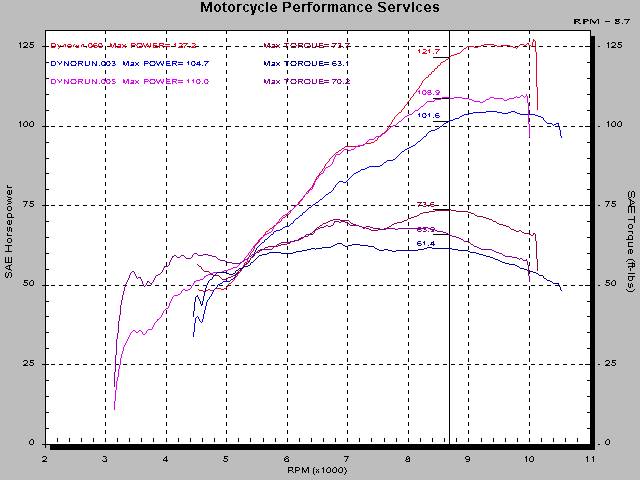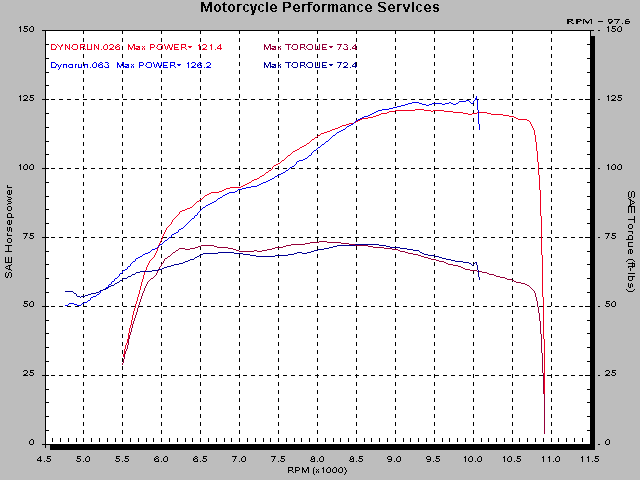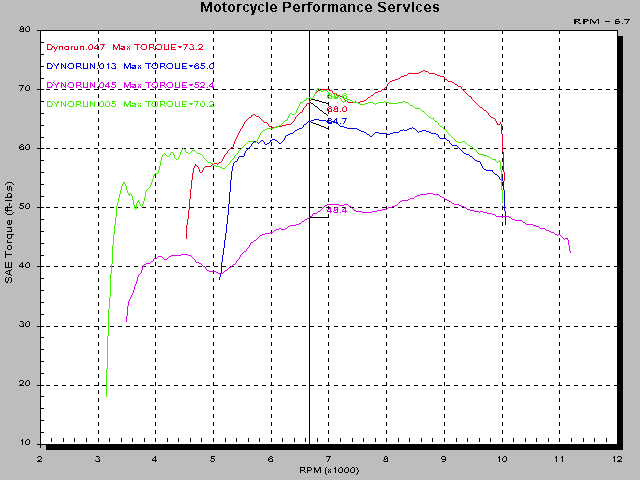
All of the different engine 'combinations' I've built have been quite unique. The only way I can hope to have any success with each one is to understand what will be required and be able to choose the components before I start. Something about the customer not being able to handle 50% cost over-runs.
Jason Sedlak wanted a fast Ducati for track days. He has had a '95 916 since new, so a 955cc engine seemed like the thing to build.
Since I first put a dial indicator on a 916SPS cam, I liked them; a little more duration than Strada cams with more lift, ideal for larger valves. A 955 with SPS cams sounds like an ideal street/track engine.
One important question popped up immediately. Does it need a dual injector fuel injection rack?
The problem with building a very powerful Ducati is, if you go beyond a certain torque level at higher RPMs you will run out of time for the injectors to supply the engines needs.
You can find all of this information on the Fuel Injected Motorcycles website at; FIM
For instance; at 8600 RPM (a point were most 916/996 have a torque peak) the time available to supply fuel is 14.5 milliseconds.
8600 RPM / 60 sec = 143.33333 revolutions per second.
Each revolution takes 1 / 143.3333 of a second, or 0.006977 ms (milliseconds per rev) and two revolutions to an engine cycle equals 0.013953 milliseconds of injector time, if all of this time would be used, it would be referred to as, 100% duty cycle.
The Weber-Marelli system allows up to 17 milliseconds as maximum injector time. That is the time of a complete 4-stroke cycle (two revolutions) at 7058.8 RPM.
Of course, one way to overcome this problem is with dual injectors. The P8 computer (found on the '93 and 94 888s and the '95 916s) is capable of firing dual injectors sequentially, which is; one injector per cylinder is used at the 'map' injector time, up to a certain injector time (that point is set by the software on the 'chip'.)
Above that designated injector time the computer fires both injectors at 1/2 the map duration.
The later 16M computer doesn't have that capability, so it just fires both injectors at 1/2 the time, all of the time.
But, I digress......
The injection map of the 916SPS (Ducati designation 071) chip has a maximum injector time of 14.6 milliseconds at 8300 and 8600 RPM. I knew then that I had to increase the fuel pressure to make an 071 chip work for a 125HP, single injector engine. That is easily done.
So, I proceeded. I bored the cases, for 96mm cylinders, and machined and ported the heads to take 37mm inlet valves and 31mm exhaust valves.
BCM has 955 pistons with rings a little thicker than 'Corsa' rings (thicker is better for longevity, not so better for 12,500 RPM), and the 916SPS cams.
The power would be helped by a larger exhaust system, so I chose a 51mm system (that would be 2 inches, since it's made in the U.S.) Fitting the system wasn't fun because of poor quality of fit. I don't feel it appropriate to use this report to slam the manufacturer, but the availability of exhaust systems for these bikes is horrible, so one will often accept poor quality along with avaliability.
I was pretty sure that we wouldn't need a 4-injector rack (another $1000+ dollars.)
During the break-in on the dyno, I found what appeared to be inadequate fuel at WOT (were my calculations wrong?) Further investigation showed that the original fuel pump was failing. Once I installed a new one, the fuel pressure was very stable and the serious mapping began.
Fuel and ignition map changes ensued, until I was convinced that there wasn't any more power to be had, and 'there you have it';

The blue trace is a properly tuned 916, the purple is a pretty typical 996, and the red is the subject 955.
The 996 runs were started from a lower RPM than the runs for the 916 and the 955, but the indications are that the 955 has a little less power than the 996 below 8000 RPM, bummer!
Maybe I should compare the 955 with a 916SPS;

There is a little less torque with the 955 vs. the 996.
Also, you should notice the shift in the torque peaks. This is probably caused by the lower back-pressure in the larger pipe of the 955. It appears that the tuning shifts down-ward as the engine ahead of any exhaust system gets larger or stronger.
Of course, when I decide to show an example of this effect, there is an exception to the rule and this 955 is the exception.
Following is a chart showing a 748, a 916, a 996 and the 955, all with stock 46mm systems with slip-ons;

The effect is quite noticeable when you look at the 748 (violet) the 916 (blue) and the 996 (green). The exception is the 955 (red).
This may not be as much of an anomaly as it first appears. The lower tuning points are on top of those of the 996, the highest torque peak of the 955 is a little higher than that for the 996, but that may represent the fact that the volumetric efficiency is better (larger valves and more efficient ports) and that may make the peak appear to be higher.
The 955 has a better defined set of peaks. I'd like to think that it is because I have the WOT fuel correct. The trace of the 996 seems to be missing a peak at 5800 RPM, that may be due to the wrong fuel/air ratio at that point.
Finally, you would expect the tuning points to shift with the difference in cam timing. The only engine on that chart without Strada cams (yes, all of the others come with the same cams) is the 955. The SPS cams have little longer duration.
I've digressed again......
In spite of the fact that the power isn't in the 130 range, the SPS cammed engine should be fast, and it will be well behaved, and easy to ride.